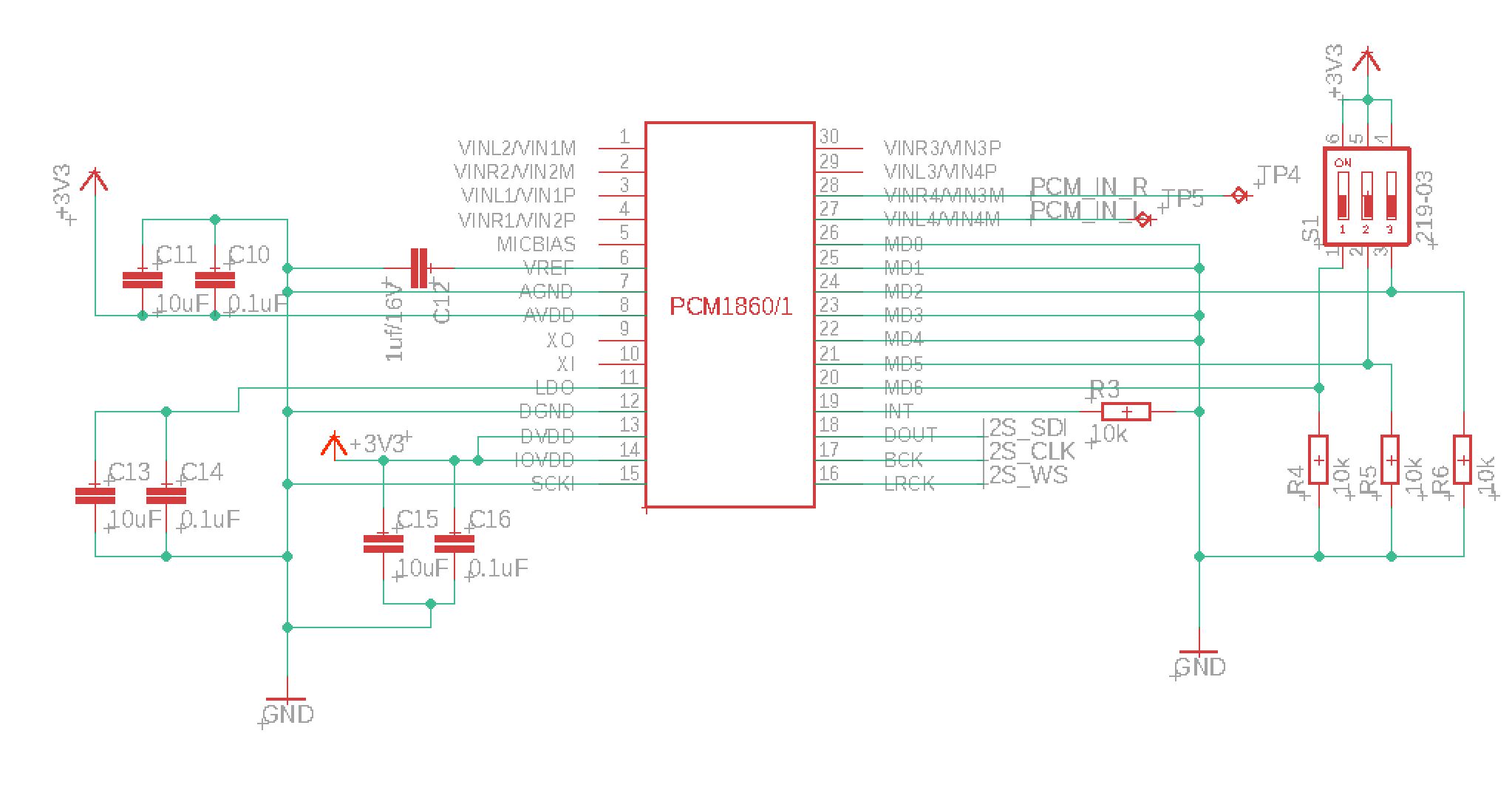Other Parts Discussed in Thread: PCM1862
Hi,
I am trying to integrate a PCM1860 to a MediaTek MT7688 SoC that supports I2S for very simple mono audio capturing using only one channel.
Could someone please help me with understanding what clocks I need for most basic operation? I have derived the following schematic so far, in which I have tied SCKI to GND and left XO,XI open. Would the PCM1860 create its clocks from the I2S inputs?
Any advise is really appreciated

